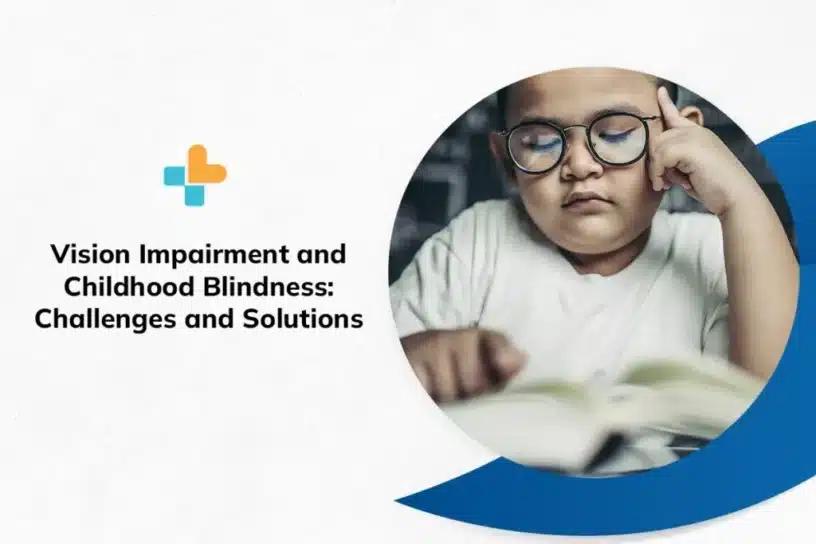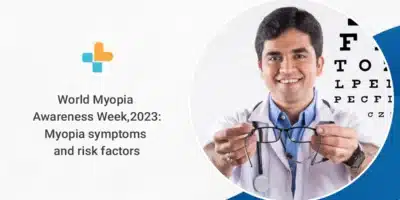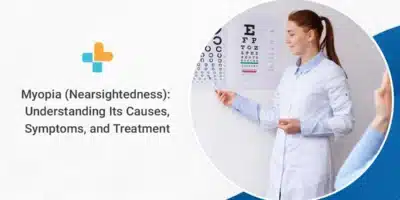The World Health Organization (WHO) estimates that 19 million children under the age of 15 are visually impaired. Among these, 7–31% of childhood blindness and vision impairment is avoidable, 10–58% is treatable, and 3–28% is preventable.
This is only the tip of the iceberg. Given today’s population, the number of children with visual impairment is likely estimated to be closer to 30 million. Unfortunately, vision impairment often goes undiagnosed, unnoticed, and untreated; it persists into adulthood and affects one’s quality of life.
Having vision impairment as a child can negatively and sometimes irreversibly impact a child’s academic performance, emotional well-being, and social development.
In the following article, we examine the symptoms and solutions for preventing vision impairment and blindness in children.
What is Vision Impairment?
Vision impairment refers to a decrease in the ability to see to the extent that it causes hindrance in daily activities. This can include partial vision loss, colour blindness, or complete blindness.
Vision impairment can happen at any age. While some conditions may cause low vision in children for only a short time, most conditions persist throughout their lives.
The following are the most common vision problems in children:
- Myopia (short-sightedness)
- Hyperopia (long-sightedness)
- Amblyopia (lazy eye)
- Strabismus (crossed eyes)
- Ptosis (droopy eyelids)
- Convergence insufficiency
Causes of Vision Impairment
Vision impairment may be caused by a loss of visual clarity, where the eye doesn’t see objects as easily as usual. It may also be caused by a loss of visual field, where the eye cannot see wide areas or things afar as usual.
The causes of low vision in a child may have various contributing factors, the most common being:
- Neurological conditions (cortical vision impairment)
- Genetic conditions like retinitis pigmentosa
- Congenital blindness (caused by prenatal or postnatal infection)
- Conditions like pediatric glaucoma, cataracts, or cancers
- Infections of TORCH viruses during pregnancy (rubella, cytomegalovirus, and toxoplasmosis)
- Structural problems with the eyes (microphthalmia or anophthalmia)
Early Symptoms and Challenges of Vision Impairment
Children with vision problems can be first identified by watching their behaviour or how they use their eyes.
The early symptoms of vision impairment and childhood blindness can vary, but some common signs and challenges faced by children include:
- Squinting or closing one eye when trying to look at an object
- Tilting their head to read or view objects
- Holding objects very close to their eyes
- Avoiding activities that require visual focus
- Complaining of frequent headaches, eye pain, or itchiness
- Poor performance in school, especially with tasks that involve reading and writing
- Difficulty recognizing familiar faces or objects
- Eyes that are sensitive to light
- Hand-eye coordination difficulties
If you suspect that your child may have vision problems, have them evaluated by an ophthalmologist as soon as possible. Early diagnosis can help prevent or reduce further vision loss and improve the child’s quality of life.
Diagnosis of Vision Impairment and Childhood Blindness
Early intervention and appropriate treatment make it possible to treat vision impairment and avoid childhood blindness.
Diagnosis begins with analyzing the complete medical and family history of visual impairment in the patient. It can be followed by a comprehensive external eye examination (including lids, conjunctiva, cornea, iris, lens, etc.) which may help in determining the underlying condition.
An ophthalmologist may also use the following tests to determine the degree of vision impairment and blindness in children.
1. Snellen Test
Also known as visual acuity test, this test uses a chart called Snellen’s chart, which contains progressively shortening random letters and numbers.
The chart is placed 6 metres away from the patient, and the individual is asked to read the letters. The ability to read with each eye and both eyes together determine the visual acuity.
2. Visual Field Test
This test is used to measure the patient’s peripheral vision or the visual field of the eyes. The visual field is the range of vision that allows an individual to see without tilting or turning his head.
3. Tonometry Test
This test uses specialized instruments to determine fluid pressure inside the eye (intraocular eye pressure) to evaluate for glaucoma.
4. Retinoscopy
This test involves shining a light into the eye to observe the reflection from the back of the eye (retina). It helps eye doctors determine a child’s eyeglass prescription.
Other tests like visually evoked potential (VEP), electroretinogram (ERG), electrooculogram (EOG), autorefractors, and stereo acuity tests are sometimes prescribed to check if the signals from the eye are travelling effectively to the brain.
Solutions for Vision Impairment and Childhood Blindness
The solutions for vision impairment depend on the underlying causes of low vision in a child and its severity. Some common treatment methods include:
- Corrective lenses: Glasses or contact lenses can help correct refractive errors and improve visual clarity.
- Medications: In some cases, medicines and drops may be used to treat underlying conditions that are causing vision loss.
- Surgery: Certain vision problems, such as cataracts, can be treated with surgical procedures.
How To Deal With Vision Impairment and Childhood Blindness
Children with vision impairments may require special education and rehabilitation services to help them learn and develop necessary skills. Providing the right support and counselling can make a difference for a child with vision impairment and their family.
A child with vision impairment or childhood blindness has a difficult life every day. The challenges cannot be overcome without extra support and love. It’s crucial for the family to play, communicate, socialize, and bond with the child every day to stimulate his other senses, support, and install confidence for the child’s development.If you’d like to learn more about the common visual problems in children and childhood blindness or seek medical intervention and counselling for your child, get in touch with Ayu Health at +91 636-610-0800 or book an appointment on our website.
Our Hospital Locations
Ophthalmology Surgery Hospitals in Chandigarh | Ophthalmology Surgery Hospitals in Bangalore | Ophthalmology Surgery Hospitals in Jaipur | Ophthalmology Surgery Hospitals in NCR | Ophthalmology Surgery Hospitals in Hyderabad
Our Doctors
Ophthalmology Surgery Doctors in Chandigarh | Ophthalmology Surgery Doctors in Bangalore | Ophthalmology Surgery Doctors in Jaipur | Ophthalmology Surgery Doctors in NCR | Ophthalmology Surgery Doctors in Hyderabad
About the Author

Dr. S. Goel
Dr. S. Goel is a renowned Internal Medicine Specialist currently practicing at Ayu Health, Bangalore. He is a Specialist in Internal Medicine, Diabetes HTN, Paediatric Care, and Family Medicine.




